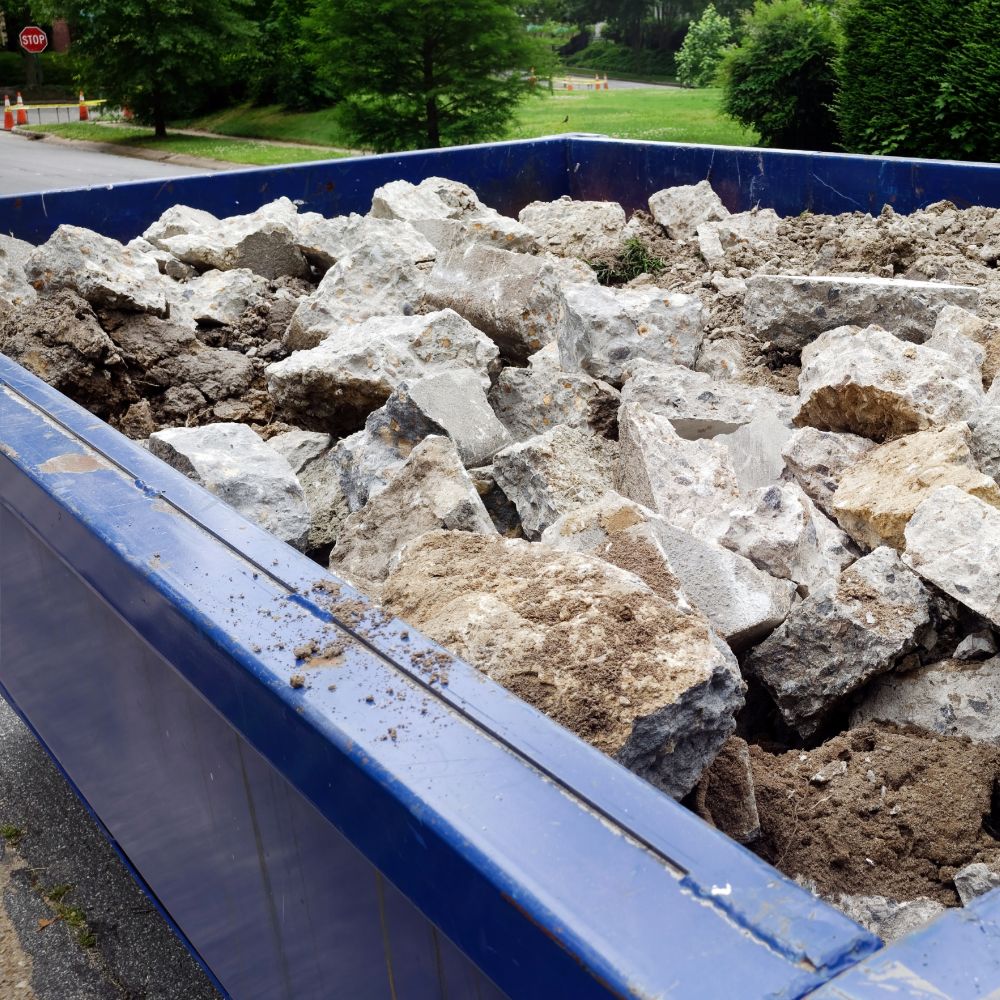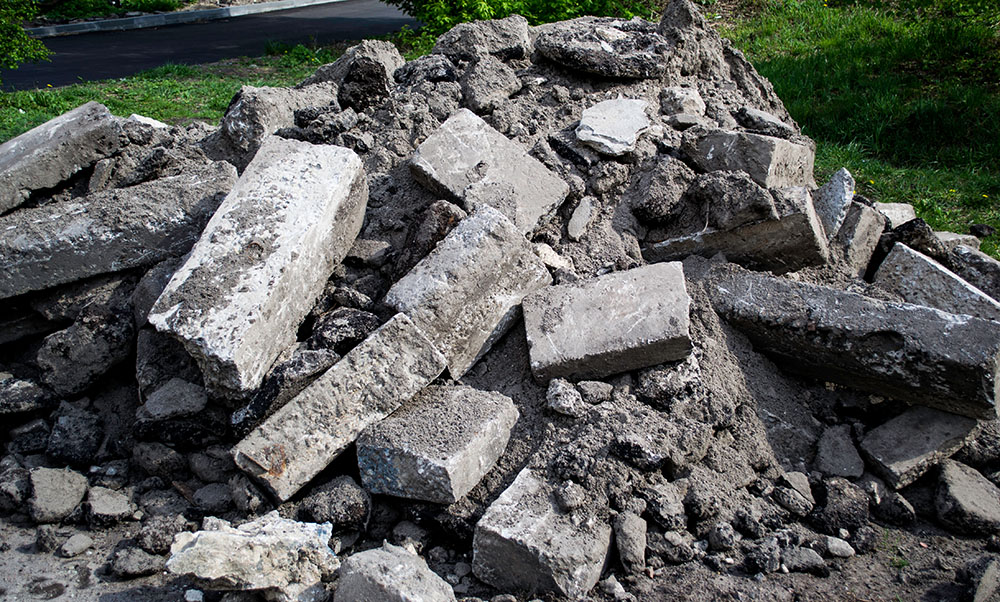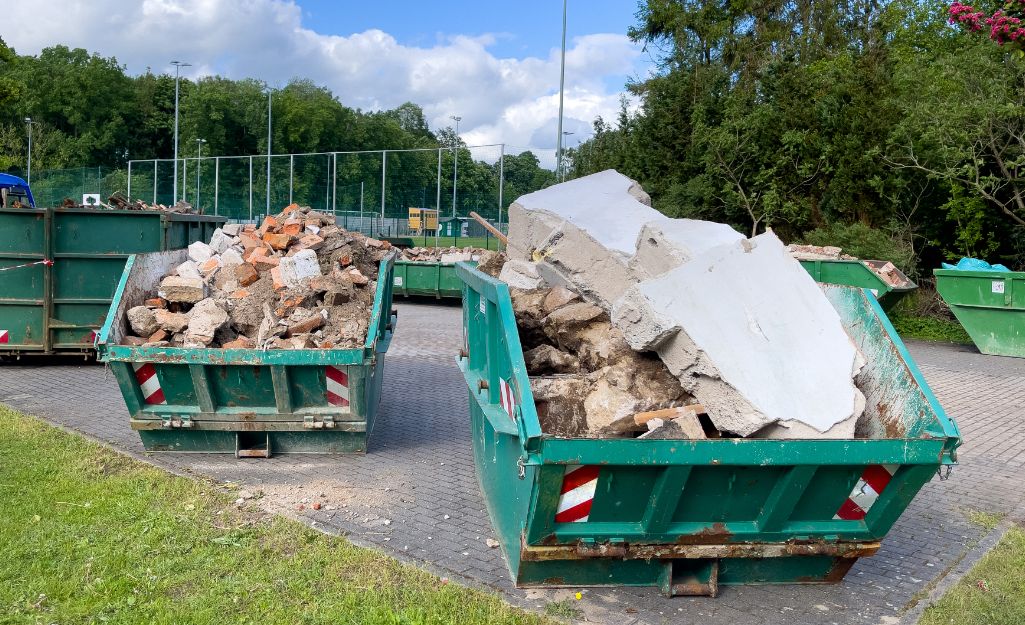Concrete waste disposal is crucial for construction and demolition projects. Proper disposal helps the environment and saves costs.
Concrete waste can pile up quickly on construction sites. It’s heavy, bulky, and can’t just be thrown away. Disposing of it properly ensures that we minimize environmental harm and make the best use of resources. There are many ways to handle concrete waste responsibly.
Recycling and reusing are popular methods. These methods reduce landfill use and save money. This blog will explore effective and eco-friendly ways to dispose of concrete waste. Learn how to manage your concrete waste efficiently while helping the planet.
Introduction To Concrete Waste Disposal
Concrete waste disposal is a significant aspect of construction management. Proper disposal ensures environmental safety and sustainability. This blog post will delve into the importance of proper disposal and its environmental impact.
Importance Of Proper Disposal
Proper disposal of concrete waste is crucial for several reasons. It helps maintain a clean environment and prevents contamination. Improper disposal can lead to health hazards for people and animals.
Here are a few key points about the importance of proper disposal:
- Environmental Protection: Proper disposal prevents soil and water pollution.
- Health Safety: Reduces the risk of respiratory problems and other health issues.
- Resource Management: Allows for recycling and reuse of concrete materials.
Environmental Impact
Concrete waste can have a significant impact on the environment. It contributes to landfill overflow and increases carbon emissions.
Consider the following environmental impacts of concrete waste:
| Impact | Description |
|---|---|
| Landfill Overflow | Concrete waste takes up valuable landfill space. |
| Carbon Emissions | Decomposing concrete releases harmful gases. |
| Water Pollution | Runoff from concrete waste can contaminate water sources. |
Proper disposal can mitigate these environmental impacts. Recycling concrete waste reduces landfill use and cuts down on carbon emissions. It also helps in conserving natural resources.
In conclusion, concrete waste disposal is essential for environmental health. Proper disposal practices ensure sustainability and safety.
Current Disposal Methods
Concrete waste disposal is a significant issue in construction. Proper disposal is crucial to minimize environmental impact. Several methods are used to handle concrete waste. Below are the most common methods: landfilling and incineration.
Landfilling
Landfilling is the most common method for disposing of concrete waste. This method involves transporting the waste to a designated landfill site. Here, the waste is buried and compacted.
Landfilling has some advantages. It is relatively cheap and straightforward. However, it also has several drawbacks. One major issue is that it occupies valuable land space. Additionally, it can lead to soil and groundwater contamination. This method is not sustainable long-term. It contributes to environmental degradation.
| Advantages | Disadvantages |
|---|---|
| Cheap | Occupies land space |
| Straightforward | Soil and groundwater contamination |
Incineration
Incineration is another method for disposing of concrete waste. This method involves burning the waste at high temperatures. The process reduces the volume of waste significantly.
Incineration has its benefits. It reduces the volume of waste by up to 90%. It also generates energy that can be used for other purposes. However, it has some downsides. It releases harmful emissions into the atmosphere. This can contribute to air pollution. Furthermore, it is more expensive than landfilling.
| Advantages | Disadvantages |
|---|---|
| Reduces waste volume | Harmful emissions |
| Generates energy | Expensive |
Recycling Concrete Waste
Recycling concrete waste is an essential process in construction. It helps in reducing landfill space and preserving natural resources. Recycling concrete involves breaking down old concrete into smaller pieces. These pieces can then be reused in various applications, reducing the need for new materials.
Benefits Of Recycling
Recycling concrete has numerous benefits. Here are some key advantages:
- Environmental Impact: Reduces landfill waste and conserves natural resources.
- Cost Savings: Lower disposal costs and less need for new raw materials.
- Energy Efficiency: Less energy required compared to producing new concrete.
- Resource Conservation: Preserves gravel, sand, and water resources.
- Reduced Emissions: Cuts down on greenhouse gas emissions from cement production.
Recycled Concrete Products
Various products can be made from recycled concrete. These products are versatile and useful in many construction projects:
- Aggregate Base: Used in road construction and foundation base layers.
- New Concrete: Recycled aggregate can be mixed into new concrete.
- Landscaping Material: Suitable for pathways, garden beds, and erosion control.
- Gabion Walls: Durable material for retaining walls and erosion barriers.
- Riprap: Large pieces used for shoreline erosion control and riverbank stabilization.
Recycling concrete waste provides environmental, economic, and practical benefits. It supports sustainable construction practices and promotes resource efficiency.

Innovative Reuse Techniques
Concrete waste disposal is a growing concern in today's world. Yet, innovative reuse techniques offer sustainable solutions. These methods not only reduce waste but also save resources. Let's explore some of these techniques.
Crushed Concrete For Road Base
One effective reuse technique is using crushed concrete for road base. This process involves breaking down old concrete into smaller pieces. These pieces then serve as a base layer for new roads.
This method offers several benefits:
- Reduces landfill waste
- Lowers construction costs
- Provides a strong foundation
Crushed concrete is durable and environmentally friendly. It is a great alternative to traditional materials. Plus, it helps conserve natural resources.
Concrete In New Construction
Another reuse technique is incorporating recycled concrete in new construction. This involves using crushed concrete in new building projects. The material can be used in various forms:
- As aggregate in new concrete mixes
- For creating new building blocks
- As filler in structural applications
Using recycled concrete offers many advantages. It reduces the demand for new raw materials. It also cuts down on energy consumption. Moreover, it helps lower greenhouse gas emissions.
Builders and contractors are increasingly adopting this method. It aligns with sustainable building practices. And it promotes eco-friendly construction.
These innovative reuse techniques showcase the potential of concrete waste. They highlight how waste can be turned into valuable resources. By adopting these methods, we can create a more sustainable future.
Government Regulations And Policies
Proper concrete waste disposal is crucial. Governments worldwide have established regulations and policies to ensure safe disposal. These rules help protect the environment and public health. Understanding these regulations is essential for compliance and sustainability.
Local Disposal Guidelines
Each locality has its own set of concrete waste disposal guidelines. These rules vary depending on the area's environmental needs and waste management infrastructure. Here are some common local guidelines:
- Sorting waste by type before disposal.
- Using designated disposal sites for concrete waste.
- Following specific procedures for hazardous material disposal.
- Obtaining necessary permits for large-scale disposal.
Local authorities often provide resources and support for businesses and individuals. These can include educational programs, disposal services, and compliance assistance. Always check with your local waste management office for the latest regulations.
International Standards
International organizations also set standards for concrete waste disposal. These standards aim to harmonize practices across countries. This ensures a consistent approach to environmental protection. Key international standards include:
- ISO 14001: Environmental Management Systems.
- Basel Convention: Controlling Transboundary Movements of Hazardous Wastes.
- EU Waste Framework Directive: Comprehensive waste management guidelines.
Compliance with these standards is crucial for companies operating globally. It demonstrates a commitment to sustainable practices and helps avoid legal issues. Adhering to international standards also enhances a company's reputation.
Governments and international bodies work together to create effective concrete waste disposal policies. This cooperation helps protect the planet and ensures a healthier future for all.

Challenges In Concrete Waste Management
Concrete waste management presents significant challenges. These challenges impact both the environment and the economy. Understanding these barriers is crucial for effective disposal and recycling.
Economic Barriers
Economic barriers often hinder concrete waste management efforts. The cost of transporting and disposing of concrete waste can be high. Many companies lack the funds for proper disposal methods. This leads to illegal dumping, which harms the environment.
Here are some key economic barriers:
- High Disposal Costs: Proper disposal methods require significant financial investment.
- Lack of Funding: Many companies cannot afford the costs associated with recycling.
- Limited Market for Recycled Concrete: There is often a low demand for recycled concrete products.
Technical Difficulties
Technical difficulties also pose challenges in concrete waste management. Recycling concrete requires specialized equipment and technology. Not all facilities have access to these resources. This can limit the amount of concrete that gets recycled.
Consider the following technical difficulties:
- Specialized Equipment Needs: Recycling concrete requires advanced machinery.
- Quality Control: Ensuring the quality of recycled concrete is challenging.
- Contaminants: Concrete waste often contains contaminants that complicate recycling.
Addressing these economic and technical challenges is essential for effective concrete waste management. It can lead to better environmental outcomes and reduce overall waste.
Case Studies Of Successful Initiatives
Concrete waste disposal is a growing concern in urban areas. Several initiatives have shown success in managing and recycling concrete waste. This section will highlight some of these successful projects. These case studies demonstrate the potential for sustainable practices in concrete waste management.
Urban Development Projects
Urban development often leads to significant concrete waste. Some cities have adopted innovative solutions to address this issue. Here are a few examples:
- City of Austin, Texas: The city implemented a concrete recycling program. Old concrete is collected and processed into new construction materials. This initiative reduces landfill waste and lowers construction costs.
- Los Angeles, California: LA has a comprehensive concrete waste management system. Contractors are required to recycle a certain percentage of their waste. This policy has greatly reduced the amount of concrete in landfills.
Sustainable Construction Practices
Construction companies are adopting sustainable practices to manage concrete waste. These practices not only help the environment but also reduce costs. Here are some successful examples:
| Company | Initiative | Outcome |
|---|---|---|
| Skanska | Recycles concrete waste into new projects | Reduced waste and saved costs |
| Balfour Beatty | Uses crushed concrete as base material | Decreased need for new materials |
Both urban projects and construction companies are finding ways to manage concrete waste effectively. These initiatives are proof that sustainable practices are not only possible but also beneficial. They set a positive example for others to follow.

Future Prospects
Future Prospects in concrete waste disposal look promising. With ongoing advancements and global efforts, the industry is evolving rapidly. We will explore the role of technology and international cooperation in shaping the future of concrete waste disposal.
Technological Advancements
Technology is playing a crucial role in managing concrete waste. Innovative machinery and recycling techniques are emerging. These advancements help in reducing waste and enhancing efficiency.
For example, advanced crushers and grinders can break down concrete into reusable materials. This process minimizes landfill usage and conserves natural resources. Automation in sorting and processing has also improved accuracy and speed.
Furthermore, the use of artificial intelligence (AI) and machine learning in waste management is growing. These technologies help in predicting waste patterns and optimizing recycling processes.
Global Collaboration
International collaboration is key to tackling concrete waste challenges. Countries are sharing knowledge and best practices. This cooperation leads to better waste management strategies worldwide.
Several global organizations are working together to create standards and regulations. These guidelines ensure sustainable practices in concrete waste disposal. For instance, the European Union has set stringent recycling targets. These targets encourage member countries to adopt eco-friendly methods.
Moreover, joint research initiatives are fostering innovation. Scientists and engineers from different nations are collaborating. They are developing new materials and techniques to reduce waste.
Below is a summary of key points in a table:
| Aspect | Details |
|---|---|
| Technological Advancements | Innovative machinery, AI, machine learning |
| Global Collaboration | Knowledge sharing, standards, joint research |
Both technological advancements and global collaboration are essential. They help in creating a sustainable future for concrete waste disposal.
Frequently Asked Questions
What Is Concrete Waste Disposal?
Concrete waste disposal is the process of removing and managing leftover concrete.
Why Is Concrete Waste Disposal Important?
It prevents environmental damage and promotes recycling.
How Do I Dispose Of Concrete Waste?
You can hire a waste removal service or take it to a recycling center.
Can Concrete Waste Be Recycled?
Yes, concrete waste can be crushed and reused in new construction projects.
Are There Regulations For Concrete Waste Disposal?
Yes, local regulations often dictate proper disposal methods to protect the environment.
What Are The Benefits Of Recycling Concrete Waste?
Recycling saves landfill space and reduces the need for new raw materials.
How Much Does Concrete Waste Disposal Cost?
Costs vary based on volume and disposal method, ranging from minimal to moderate.
Where Can I Find Concrete Recycling Centers?
Check local directories or contact your city’s waste management services.
Can I Reuse Concrete Waste In My Garden?
Yes, crushed concrete can be used for garden paths or as a base for new projects.
Is Concrete Waste Hazardous?
No, but improper disposal can harm the environment. Always follow local guidelines.
Conclusion
Proper concrete waste disposal benefits the environment. It also saves resources. Recycle concrete to reduce landfill waste. Small changes make a big impact. Choose eco-friendly disposal methods. Keep our planet clean. Sustainable practices improve community health. Let’s work together for a greener future.